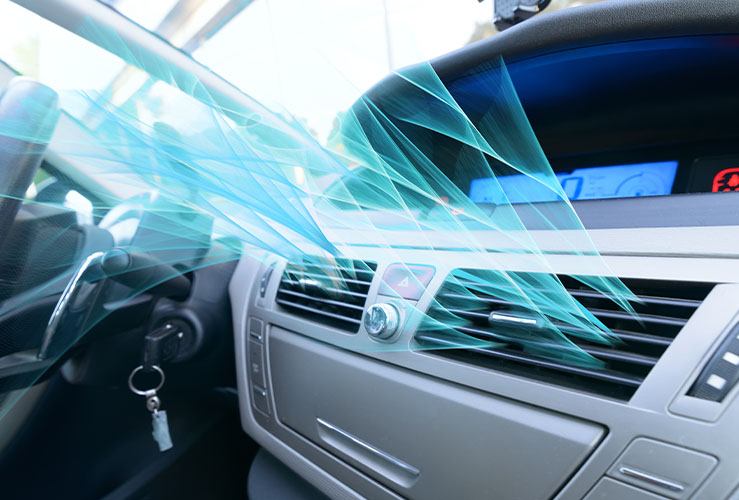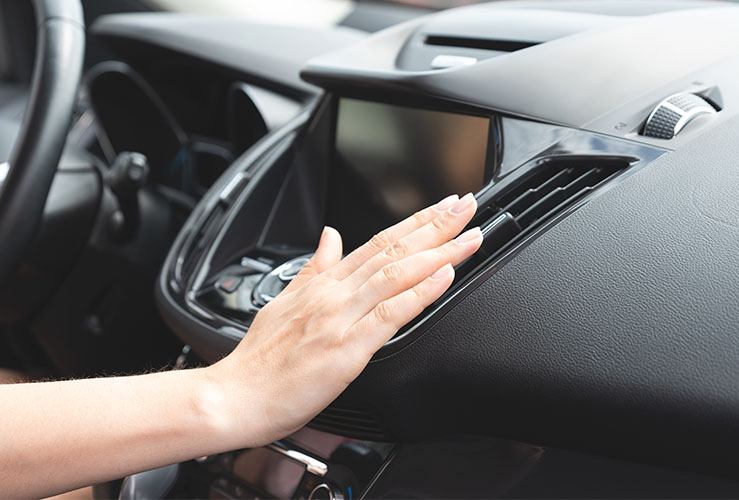
Air conditioning fault: How to fix it yourself
Is your air conditioning system not working as well as it once did? Or does it fail completely to cool your vehicle's cabin? Driving around in a hot car is not pleasant, so it's important to address the problem promptly. However, before you ask your local garage for help, you might try to fix the issue yourself - potentially saving you money. And at the very least, having investigated it yourself, you'll have a better idea of how much a repair bill should be (in the unlikely event your garage tends to inflate bills).
Here are some simple steps to diagnose the problem
Turn on your AC
With engine running (it must be on for the AC to work), switch on your air conditioning system. Choose the non-recirculated "fresh air" option and set the air to blow from the dashboard’s central vent. Next, turn the AC to max.
Listen for odd noises
If your AC doesn’t sound like it normally does, the system's compressor might be faulty.
Feel the air temperature

Is it a different temperature from the air in the cabin? Is it colder? Warmer?
Try high and low pressure air flow
Airflow should change when you switch between these settings. If it does not, it indicates a problem.
Notice any odd smells?
Unusual smells from your AC unit suggest there could be a leak - or the air filter needs to be replaced.
More ways to diagnose and fix your AC
Check air is blowing out of vents as it should
Try adjusting the vents. If the airflow does not change direction the blend doors could be faulty - and may need to be replaced.
Examine the air filter

Over time, all AC air filters get clogged up with dust and grime. If you notice a musty odour, a blocked air filter could be the issue. You might also detect a burnt or singed smell - which would be the dust overheating.
Check your car's manual for how to access your air filter. Having done so, you'll probably see a build up of grey-coloured dust and debris. If so, it's time to swap out the air filter for a new one. If you are mechanically minded, this might be a straightforward operation. Alternatively, your garage can fit a new one for you.
Check for a faulty blower motor
Do this by turning on your heater. If you experience poor air flow with the heat on, your blower motor might be faulty. It may, for example, have a blown resistor which stops it from blowing on a lower setting.
Clear the AC condenser frontage
Normally located on the front of your car's radiator, your AC condenser can get blocked with leaves and other debris over time. Try cleaning this area.
Examine the AC compressor clutch
Is your AC pumping out air at the expected pressure, but at a high temperature? This could mean your AC compressor clutch is faulty. Check under the bonnet, and look for a motor with a big wheel on the end, usually near the front of the engine. With the engine running, check to see if this wheel is spinning. If not, your compressor is not working.
Also check the compressor’s belt; if it's loose, it will need replacing.
Leaks in the coolant system
AC refrigerant should remain at the same level - unless there's a leak. Such leaks are a fairly common cause of AC temperature issues.
If you see oil has built up around the AC hoses, you may have a leak. There are also test kits you can buy for this purpose - they may work by way of UV light, dye, or be entirely electronic.
A coolant system leak means a trip to the garage - since they will have the necessary components.
Frozen components
In very cold weather your AC's components may freeze due to excess moisture. In most cases simply turning off the AC for a while will allow the components to thaw.




